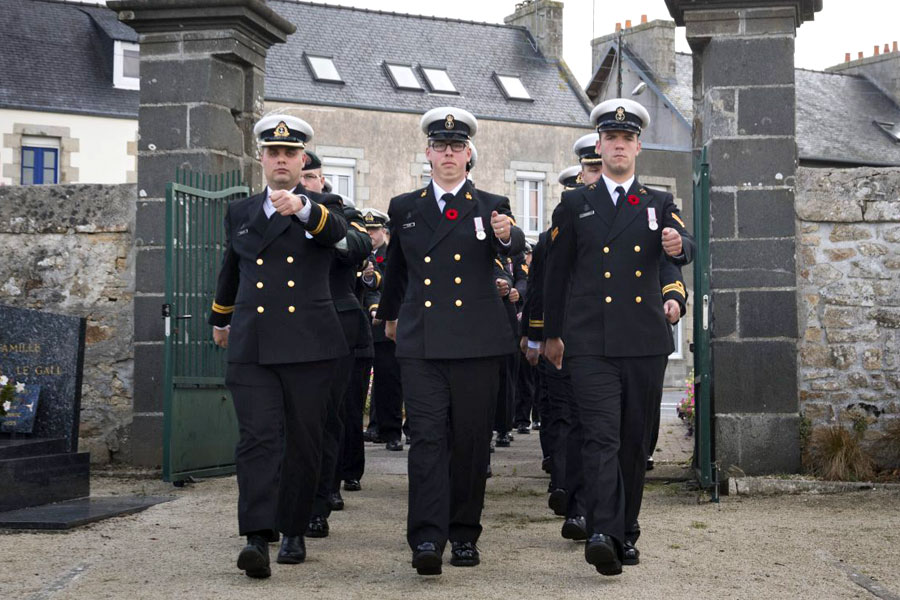HMCS Montréal honours fallen sailors from Second World War
By Lookout on Oct 22, 2017 with Comments 0

The ship’s company of HMCS Montréal marches through the gates of Plouescat Cemetery. Photo by LS Dan Bard, Formation Imaging Services
Lieutenant(N) Linda Coleman, Public Affairs Officer ~
Crew members from HMCS Montréal recently took time from their operation to honour and remember the officers and sailors of HMCS Athabaskan who were lost at sea when the ship was torpedoed and sunk off the coast of France during the Second World War.
The ship’s company and staff members from Canadian Fleet Atlantic embarked in Montréal for Neptune Trident 17-02 laid wreaths at the cenotaph at Plouescat Cemetery, France where 59 of the 128 sailors from HMCS Athabaskan are buried.
The next day, as the ship transited north, crew members laid a wreath at sea over the area where HMCS Athabaskan sank. The wreath was laid by those who served in HMCS Athabaskan III, as they have a close connection to the ship and its history.
“When I was at the cemetery yesterday, I was struck, as I usually am when I visit a war cemetery, by the age of the fallen,” said Cdr Sherban, Montréal’s commanding officer, during the at-sea wreath-laying ceremony.
“Now imagine that you’re 18 to 20 years old – the same age as many of the sailors in the Athabaskan and indeed all of the fighting ships of the navy,” he said. “A year ago, you were finishing school, working on your family’s farm, trying to find a date for the next dance and suffering from all of that angst and awkwardness that sometimes afflict those who are young. Now you’re fighting for your life off a foreign coast wondering if you’re going to live or die. Imagine you at that age.”
Cdr Sherban’s remarks served as a reminder of the horrors of war, the sacrifices made, and the importance of why we continue to remember our fallen heroes.
“One of the stories that resonates with me the most is the story of the captain, John Stubbs,” he stated. “Already in the water as his ship sank around him, the Haida spotted and approached him. HMCS Haida’s captain, Harry DeWolf, implored Stubbs to come aboard; however, he refused rescue, demanding that DeWolf take Haida back to England before they could be targeted by the Luftwaffe or returning Kriegsmarine units. [He] then swam back to save as many of his sailors as possible. He died and is buried in Plouescat alongside those very same sailors.”
The ceremony concluded with the ship’s company of Montréal feeling a sense of honour, pride, and relief that we’re no longer sailing in such dangerous times. Following the ceremony, Montréal continued north on Neptune Trident 17-02, conducting operations with partners and allies.
Filed Under: Top Stories
About the Author:





